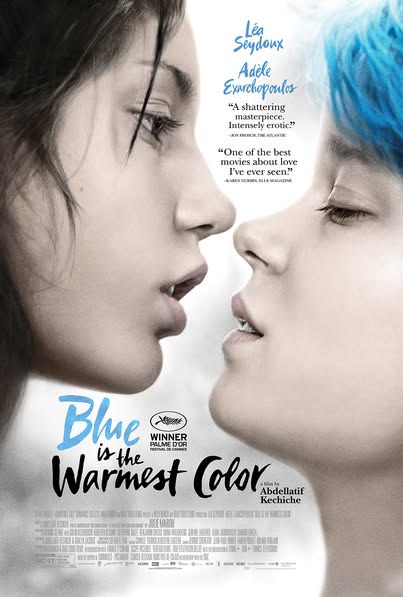Blue Is the Warmest Colour (2013)

Blue Is the Warmest Colour (La vie d’Adèle) is a groundbreaking French romantic drama directed by Abdellatif Kechiche, released in 2013. This film is notable for its raw and intimate portrayal of love and self-discovery, centering on the passionate relationship between two young women, Adèle (Adèle Exarchopoulos) and Emma (Léa Seydoux). The film is based on the graphic novel by Julie Maroh and has garnered critical acclaim for its authentic representation of LGBTQ+ relationships.
The story follows Adèle, a high school student who is navigating her identity and desires. Her life takes a transformative turn when she meets Emma, an artistic and confident blue-haired woman. Their connection deepens into a passionate romance that unfolds over several years, capturing both the joy and the challenges of their relationship. The film explores themes of love, heartbreak, and the complexities of growing up, resonating with viewers through its emotional depth.

One of the film’s most striking elements is its unflinching approach to intimacy. The long, candid scenes of physical affection between Adèle and Emma are both celebrated and critiqued, sparking discussions about the representation of sexuality in cinema. The chemistry between the two leads is palpable, adding a layer of authenticity to their performances. Exarchopoulos and Seydoux deliver profound portrayals, allowing audiences to connect deeply with their characters’ emotional journeys.

Kechiche’s direction emphasizes realism, often employing a documentary-style approach that immerses viewers in the characters’ lives. The film’s cinematography captures the subtleties of human emotion, with close-ups that reveal the characters’ inner thoughts and feelings. The use of color, particularly the vibrant blue associated with Emma, serves as a powerful symbol of love and longing throughout the film.

Blue Is the Warmest Colour received widespread acclaim, winning the prestigious Palme d’Or at the Cannes Film Festival, which was awarded to both the director and the lead actresses. Its impact on LGBTQ+ cinema has been significant, sparking conversations about representation, identity, and the intricacies of love.
In conclusion, Blue Is the Warmest Colour is a poignant exploration of love and self-discovery, marked by powerful performances and an intimate narrative style. Its raw portrayal of a same-sex relationship set against the backdrop of personal growth resonates with audiences, making it a landmark film in contemporary cinema. The film’s ability to evoke deep emotions and provoke thought about love and identity cements its status as a modern classic.











